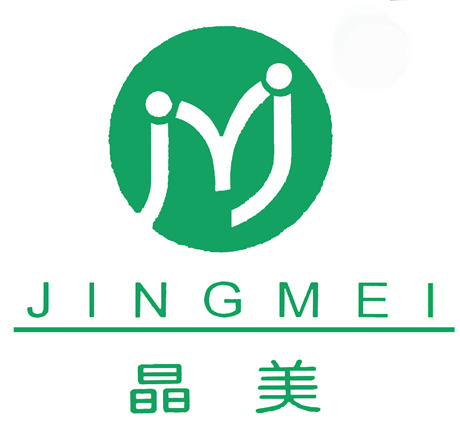NEWS
Laminated Glass: An Essential Material in the Construction and Decorative Industry
Published:
2023-08-25 12:40
Author:
Laminated glass plays a vital role in the architecture and decoration industry, especially in the fabrication of processed glass. This innovative material offers exceptional strength, safety, and aesthetic appeal, making it a preferred choice for various applications. In this article, we will explore the key aspects of laminated glass and shed light on its significance in the construction and decorative industry.
1. What is Laminated Glass?
Laminated glass consists of two or more layers of glass bonded together with an interlayer, typically made of polyvinyl butyral (PVB) or ethylene-vinyl acetate (EVA). This interlayer holds the glass layers together even when shattered, preventing it from falling apart and reducing the risk of injury. The interlayer also provides additional sound insulation and UV protection.
2. Enhanced Safety and Security
One of the primary advantages of laminated glass is its enhanced safety features. When subjected to impact, the glass may crack, but it remains bonded to the interlayer, preventing sharp shards from dispersing. This property makes laminated glass highly suitable for areas where safety is a concern, such as in windows, balustrades, and glass doors. Additionally, its toughness provides resistance against break-ins and acts as a deterrent to burglars.
3. Sound Insulation and UV Protection
Laminated glass can significantly reduce external noise infiltration, making it ideal for sound-sensitive environments. The interlayer acts as a sound barrier, absorbing and dampening sound waves. This feature makes laminated glass a desirable choice for buildings near busy roads, airports, or other sources of excessive noise.
Moreover, laminated glass offers excellent UV protection by blocking a significant portion of the harmful ultraviolet rays. This helps in preventing fading and damage to furniture, carpets, artwork, and other interior elements exposed to sunlight.
4. Design Versatility
In addition to its functional benefits, laminated glass offers a wide range of design options. The interlayer can be customized with various colors, patterns, and even embedded materials like fabrics or metals to achieve specific aesthetic goals. This versatility allows architects and designers to incorporate laminated glass in both exterior and interior applications, creating visually appealing spaces.
5. Applications of Laminated Glass
Laminated glass finds extensive use in various architectural and decorative applications. It is commonly employed in the construction of skylights, glass facades, partitions, and canopies. The ability of laminated glass to withstand extreme weather conditions, such as hurricanes or heavy impacts, makes it suitable for areas prone to such risks.
Furthermore, the use of laminated glass in interior design has gained popularity. It can be utilized in glass staircases, floors, furniture pieces, and even artistic installations, adding a touch of elegance and sophistication to any space.
In conclusion, laminated glass is an indispensable material in the construction and decorative industry. Its exceptional safety features, sound insulation properties, UV protection, and design versatility make it a sought-after choice for architects, designers, and homeowners alike. Whether it's for its strength, security, or aesthetic appeal, laminated glass continues to shape the industry, providing a safe and visually stunning solution for various applications.
1. What is Laminated Glass?
Laminated glass consists of two or more layers of glass bonded together with an interlayer, typically made of polyvinyl butyral (PVB) or ethylene-vinyl acetate (EVA). This interlayer holds the glass layers together even when shattered, preventing it from falling apart and reducing the risk of injury. The interlayer also provides additional sound insulation and UV protection.
2. Enhanced Safety and Security
One of the primary advantages of laminated glass is its enhanced safety features. When subjected to impact, the glass may crack, but it remains bonded to the interlayer, preventing sharp shards from dispersing. This property makes laminated glass highly suitable for areas where safety is a concern, such as in windows, balustrades, and glass doors. Additionally, its toughness provides resistance against break-ins and acts as a deterrent to burglars.
3. Sound Insulation and UV Protection
Laminated glass can significantly reduce external noise infiltration, making it ideal for sound-sensitive environments. The interlayer acts as a sound barrier, absorbing and dampening sound waves. This feature makes laminated glass a desirable choice for buildings near busy roads, airports, or other sources of excessive noise.
Moreover, laminated glass offers excellent UV protection by blocking a significant portion of the harmful ultraviolet rays. This helps in preventing fading and damage to furniture, carpets, artwork, and other interior elements exposed to sunlight.
4. Design Versatility
In addition to its functional benefits, laminated glass offers a wide range of design options. The interlayer can be customized with various colors, patterns, and even embedded materials like fabrics or metals to achieve specific aesthetic goals. This versatility allows architects and designers to incorporate laminated glass in both exterior and interior applications, creating visually appealing spaces.
5. Applications of Laminated Glass
Laminated glass finds extensive use in various architectural and decorative applications. It is commonly employed in the construction of skylights, glass facades, partitions, and canopies. The ability of laminated glass to withstand extreme weather conditions, such as hurricanes or heavy impacts, makes it suitable for areas prone to such risks.
Furthermore, the use of laminated glass in interior design has gained popularity. It can be utilized in glass staircases, floors, furniture pieces, and even artistic installations, adding a touch of elegance and sophistication to any space.
In conclusion, laminated glass is an indispensable material in the construction and decorative industry. Its exceptional safety features, sound insulation properties, UV protection, and design versatility make it a sought-after choice for architects, designers, and homeowners alike. Whether it's for its strength, security, or aesthetic appeal, laminated glass continues to shape the industry, providing a safe and visually stunning solution for various applications.
Keywords:
laminated glass
Related News














